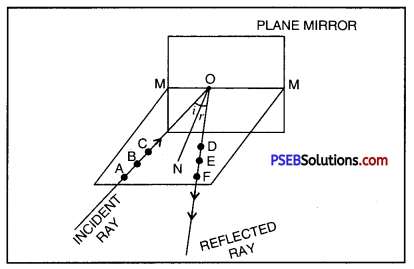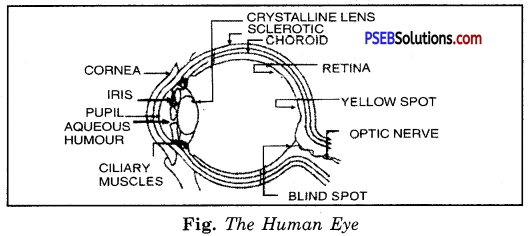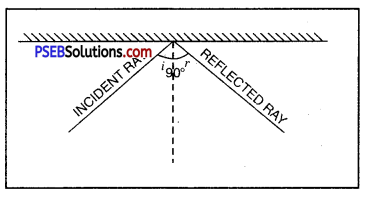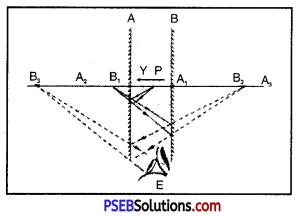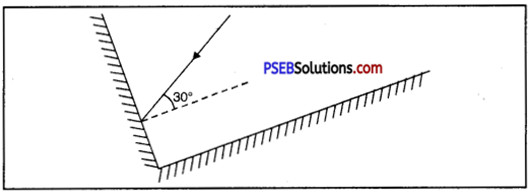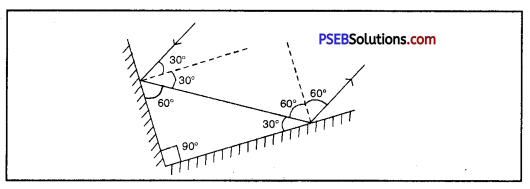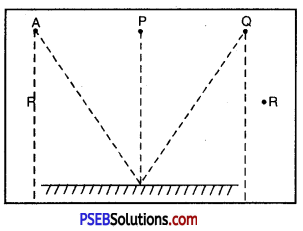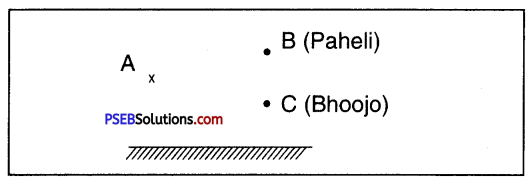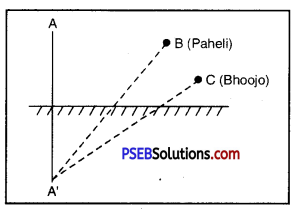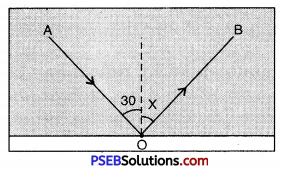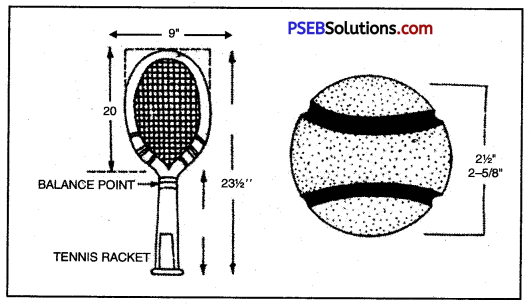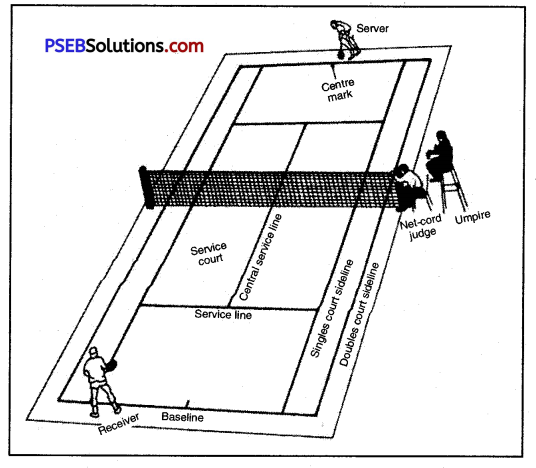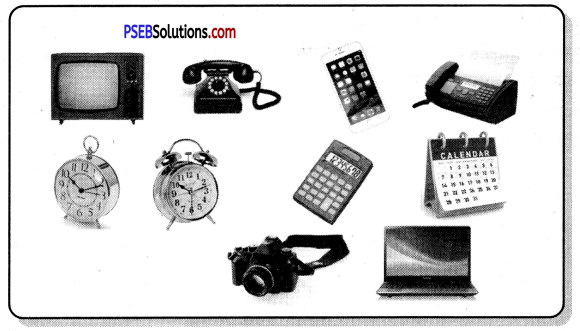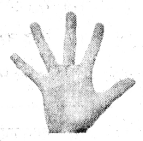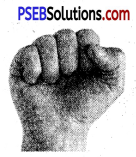Punjab State Board PSEB 12th Class Sociology Book Solutions Chapter 10 Social Problems: Alcoholism and Drug Addiction Textbook Exercise Questions and Answers.
PSEB Solutions for Class 12 Sociology Chapter 10 Social Problems: Alcoholism and Drug Addiction
Sociology Guide for Class 12 PSEB Social Problems: Alcoholism and Drug Addiction Textbook Questions and Answers
Multiple Choice Questions:
1. Rapid industrialization has led to an increase in environmental pollution such as?
(a) Degradation and desertification of land
(b) Nepotism
(c) Overpopulation
(d) Caste system
Answer:
(a) Degradation and desertification of land
2. Which of the following is not a stage of alcoholism?
(a) Prodigal phase
(b) Crucial phase
(c) Chronic phase
(d) Frequent phase
Answer:
(b) Crucial phase

3. Which one of the following is not the classification of drinkers?
(a) Rare users
(b) Light drinkers
(c) Hyper users
(d) None
Answer:
(c) Hyper users
4. Alcoholism is associated with what kind of problems?
(a) Social problem
(b) Economic problem
(c) Health problem
(d) All of the above
Answer:
(d) All of the above
5. The most widely known stimulants are
(a) Tablets
(b) Amphetamines
(c) LSD
(d) Heroine
Answer:
(b) Amphetamines
6. Tabacco is responsible for about 30% of all
(a) Cancer deaths
(b) AIDS
(c) Dengue
(d) Diabetes
Answer:
(a) Cancer deaths
7. What occurs when acceptable social standards of its use are violated, resulting in adverse physiological, psychological, and social consequences.
(a) Drug abuse
(b) Obesity
(c) Food adulterants
(d) Conflict in values
Answer:
(d) Conflict in values
Fill in the Blanks:
1. …………….. and ………………… are problems associated with increasing political corruption among leaders.
Answer:
Red tapism, Nepotism
2. The problem of untouchability in India is due to the ………………… system.
Answer:
Caste
3. When a person starts drinking even in the morning, he is said to be entered in the …………… phase.
Answer:
Chronic
4. ……………… is a narcotic and leads to nervous degeneration, liver cirrhosis, high blood pressure and a host of other diseases.
Answer:
Sedative
5. …………….. drinkers are those who drink three or four times in a month.
Answer:
Moderate
6. …………… group influence is very powerful in initiating a new person to drug taking habit.
Answer:
Peer
7. The Narcotic Drugs and Psychotropic Substances Act was amended in ………………….. to make the legislation still more stringent.
Answer:
1987
8. ………………… abuse leads to a number of short-term and long-term effects that are detrimental to health.
Answer:
Drug
9. Drug use weakens the ……………….. system and makes the individual more vulnerable to acquiring infections:
Answer:
Immune

True/False:
1. Alcoholism is more treatable than drug addiction.
Answer:
True
2. Social problems are interrelated to each other.
Answer:
True
3. Male child preference and Patriarchal system are social problems related to ecological factor.
Answer:
False
4. Alcoholism does not influence the families and communities.
Answer:
False
5. Men drink because their occupation has completely exchausted them.
Answer:
True
6. Heavy drinkers are the drinkers who drink every day or several drinks during the day.
Answer:
True
7. Teachers cannot play any vital role in the prevention of alcoholism.
Answer:
False
8. Parents are helpless in curbing the problem of drug addiction.
Answer:
True
9. Drug abuse does not influence the families and communities.
Answer:
False
Match the Columns:
| Column A |
Column B |
| Poverty |
Ecological or environmental problem |
| Undesirable condition |
Socio cultural problem |
| Male child preference |
Economic problem |
| Global warming |
Factor of female foeticide |
| State of Alcoholism |
Who drink once or twice a month |
| Light drinkers |
Chronic phase |
| Underage drinking |
Increased stress |
| Cause of Alcoholism |
Violent crime |
Answer:
| Column A |
Column B |
| Poverty |
Economic problem |
| Undesirable condition |
Violent crime |
| Male child preference |
Factor of female foeticide |
| Global warming |
Ecological or environmental problem |
| State of Alcoholism |
Chronic phase |
| Light drinkers |
Who drink once or twice a month |
| Underage drinking |
Socio cultural problem |
| Cause of Alcoholism |
Increased stress |
Very Short Answer Type Questions:
Question 1.
List the factors which are responsible for social problems.
Answer:
Socio-cultural factors, economic factors, political factors, environmental factors etc.
Question 2.
What do you mean by Alcoholism?
Answer:
Alcoholism is a pattern of consuming alcohol which is not only dangerous for himself but for his family as well.

Question 3.
Who are called the light drinkers?
Answer:
Those who drink alcohol once or twice in a month are called light drinkers.
Question 4.
List the stages of Alcoholism.
Answer:
Pre-alcoholic stage, Relief drinking stage, Acute stage and Chronic stage are the stages of alcoholism.
Question 5.
What do you mean by drug?
Answer:
Drug is a chemical substance which exerts profound and different impact on brain and body and which brings changes in one’s physical functions.
Question 6.
What is Drug Addiction?
Answer:
The meaning of drug addiction is physical dependency on any medicine or chemical thing.
Short Answer Type Questions:
Question 1.
What do you understand by Social Problem?
Or
Define social problems.
Answer:
Social problem is that unnecessary condition which must be changed. Each society goes through a phase of transition which can have constructive or destructive consequences. Destructive consequences bring out many problems which are known as social problems.
Question 2.
Write any two factors related to social problems.
Answer:
- Socio cultural factors such as untouchability, female foeticide, dowry etc. bring out many social problems.
- Economic factors such as poverty, unemployment, illiteracy, slums etc. help in the advent of social problems.
Question 3.
Write down three effects of alcohol consumption.
Answer:
- Consuming alcohol leads to the wastage of money.
- It has direct effect on health which deteriorates very quickly.
- It reduces human ability to do work and he comes under mental stress.
Question 4.
What do you mean by chronic phase of alcoholism?
Answer:
In the chronic phase of alcoholism, one starts drinking daily and even many times in a day. He always remains under the influence of alcohol, thinks adversely and is unable to do any work. He always thinks about drinking and becomes restless in the absence of alcohol.
Question 5.
What is Alcohol dependency?
Answer:
When a person starts to consume alcohol daily and is unable to live without it, this is called alcohol dependency. He becomes so depended on alcohol that he is unable to do any work without it. This is known as alcohol dependency.
Question 6.
What do you mean by Alcoholism?
Answer:
Alcoholism is a situation in which one cannot keep control on his alcohol consumption and cannot control it once he start its consumption. To get rid of stress, he tries to find ways of drinking. It increase his level of drinking.
Question 7.
What do you mean by the pre-alcoholic symptomatic phase?
Answer:
At this level, by taking advantage of social restrictions, one starts to consume alcohol to remove his tensions and to ignore one’s personal problems. He relates his consumption with stress relief situation and tries to find chances to drink.

Question 8.
Give the social causes for persons turning to drugs.
Answer:
There are many social causes with which a person turns to drugs such as due to friehds, to go to upper strata of society, for social experience, to oppose social values, to establish new social customs etc.
Question 9.
List the short term effects of drugs on an individual.
Answer:
There are few short term effects of drugs on an individual which are visible for only few minutes after consuming drug. He feels a false sense of well being, a pleasant drowsiness, distorted vision, impaired judgement, bad breath and hangovers.
Question 10.
What is the role of teachers in the prevention of drug abuse?
Answer:
Teachers can play a very important role in the prevention of drug abuse they can talk openly with their students and can keep them busy in constructive work. They can be motivated to adopt good habits.
Question 11.
What do you mean by the term drug addiction?
Answer:
When an individual consumes any medicine or chemical with which his body becomes dependent on that medicine or chemical, this is known as drug addiction. That medicine or chemical directly affects his brain and nervous system.
Long Answer Type Questions:
Question 1.
Discuss various factors of social problems in India.
Or
Discuss factors of social problems in detail.
Or
Explain two major causes of social problems in India.
Answer:
- Socio-cultural factors: These factors include untouchability, female foeticide, dowry, domestic violence, violence against women, generation gap.
- Economic factors: Economic factors include poverty, slums, unemployment, crime, urbanization, industrialization, etc.
- Regional factor: This factor includes emigration and immigration, change in population structure, population, unemployment, etc.
- Political factor: This factor includes election-related politics, nepotism, corruption, bribe, communalism, etc.
- Environmental factor. In this factor, we can take water pollution, air pollution, greenhouse effect, etc.
Question 2.
Write a short note on drugs.
Answer:
Drug is a chemical that exerts deep and different impact on body and mind of an individual. It brings changes in the physical functions of a common man. In medical terms, drug is a substance which a doctor gives to his patient to get him cured. On physical and psychological level, it can be taken as a habit which directly affects the consumer. The usage of more than required quantity of drug is so dangerous that it stimulates an individual against society. Heroin, cocain, L.S.D. alcohol, opium, tobacco etc. are known as drugs.
Question 3.
Discuss in brief the stages of Alcoholism.
Answer:
- Pre-Alcoholic Stage: At this stage, after taking advantage of social restrictions, an individual starts drinking to remove his stress and to ignore his personal problems.
- Relief Drinking Stage: At this level, the frequency and quantity of consuming alcohol increases but he himself knows that he is doing wrong.
- Acute Stage: At this stage, it becomes necessary, for an individual to consume alcohol. He faces social pressure even then he says that he has not lost control of himself.
- Chronic Stage: At this stage, one drinks for the whole day. He always remains under the influence of liquor and forgets to do his work. He feels uncomfortable in the absence of alcohol.
Question 4.
Discuss the categories of Alcoholism in brief.
Answer:
- Rare users: Those individuals who consume alcohol once or twice in one V year.
- Infrequent users: Those individuals who consume alcohol once or twice in two-three months.
- Light drinkers: Those who consume liquor once or twice in one month are light drinkers.
- Moderate drinkers: Those who consume three or four times in a month come under this category.
- Heavy drinkers: One who consumes alcohol daily or many times in a day is a heavy drinker.
Question 5.
Write the harmful effects of Alcoholism.
Answer:
- There is a wastage of money for the one who consumes liquor.
- One’s health deteriorates and he suffers from many diseases.
- The efficiency of work reduces the person who consumes liquor quite frequently.
- One’s brain goes out of control and one becomes a victim of mental stress.
- Under the impact of alcohol, people commit many crimes such as murder, rape, theft, etc.
- It leads to wastage of money which further increases poverty.
Question 6.
Why are young children more prone to alcoholism and drug addiction?
Answer:
It is true that young children are more prone to alcoholism and drug addiction. Sometimes one starts to use drugs due to his friends. His friends force him to use drugs and he becomes addicted to this. Sometimes he wants to use drugs as he observes the same thing in his family. Many individuals want to oppose social values and they start consuming drugs. Young people take education but are unable to get employment of their choice. They become half employed or remain unemployed and move on the path of drug addiction.

Question 7.
Discuss long-term effects of drugs on individuals.
Or
Write the harmful effects of Drug Addiction.
Answer:
- The drug addict becomes physically and psychologically dependent upon drugs that he needs to do many compromises in life.
- One who uses drugs gets prone to many diseases such as stomach problems, skin disease, impact on the liver, heart disease, damage to the central nervous system, etc.
- The immune system of the drug addict becomes so weak that he opens up himself to many new diseases.
- There is a possibility of suffering from AIDS one who uses drugs. Sometimes under the influence, he makes extramarital relations which can further open up a new disease of AIDS.
- It has been seen that more usage of drugs leads to the death of the drug addict.
Question 8.
Write in brief the psychological and physiological effects of drug addiction.
Answer:
Psychological Effects. One who uses drugs become so addict that he cannot live without them. He starts feeling that he cannot do anything without drug and he can do a better work once he comes under the effect of drug. Alongwith this, he feels that drug will remove all of his tension and depression. Physical Effects. Drug addiction can have a really bad impact on one’s body. He cannot sleep, his body aches, his sexual wish reaches on top once he comes under their influence, his body becomes so dependent that he cannot do anything without drugs.
Question 9.
What type of special attention should be given to the adolescents to prevent drug addiction?
Answer:
The adolescent stage is that in which a child moves out of family and goes in the hands of society. Here it is necessary for him to move on a right path. If he comes in the wrong hands, he can start consuming drugs and his future life gets destroyed. Under such circumstance, parents need to give special attention to their kids. They need to take care about his peergroup. If any one of his friends is consuming drugs, parents must talk with their kids to leave his friendship. Even parents of drug addict should be informed. Parents must care about eating habits, wearing style, time of sleeping etc. of their kids to save them from moving on the path of drug addiction.
Question 10.
Write the causes of drug addiction.
Or
Write four causes of drug addiction.
Answer:
- When one wants to reduce his tension, he starts consuming drugs.
- Sometimes one’s friends force him to consume drugs and consequently, he becomes a drug addict.
- Sometimes one wants to know about the impact of drugs, so he starts consuming drugs.
- If there is a family problem and the husband-wife is not on good terms with each other, even then one starts consuming drugs.
- Sometimes, people observe that their elders are consuming drugs, so, they also start doing the same.
Very Long Answer Type Questions:
Question 1.
What do you mean by Alcoholism? Discuss the factors responsible for it in detail.
Or
Describe Alcoholism as a major social problem of Indian society.
Answer:
Alcoholism has been considered as a social and moral problem since last few decades. Even in some states of our country restrictions were placed on alcoholism and a policy of no-alcohol was applied. But the selling of alcohol was not even stopped after the implementation of that policy and that’s why ban or restrictions were lifted after sometime. Some scholars consider it as a deviant behaviour as well as a complex disease. If any person becomes addict to use alcohol then we need a specialized doctor to remove this addiction of alcoholism. Alcoholism can be taken in that form in which person is unable to control himself. If he gets alcohol then he drinks it but if he is unable to get alcohol then he tries to get alcohol in one way or other. Person has to go through a number of mental tensions and he gets relief from every type of tension after the use of alcohol.
But here question arises that what is Alcoholism and who is an alcoholic person. In today’s modern age and in simple words whichever person uses alcohol is known as alcoholic person and the process of drinking alcohol is known as alcoholism. Some scholers says that the use of less amount of alcohol cannot be called as alcoholism. A person, who becomes so addict of using alcohol that he hardly thinks to live without it, can be called as alcoholic person and the person who uses alcohol regularly and in too much quantity, is also known as alcoholic person. In this way the process of using whisky is known as alcoholism.
Alcoholism can also be taken as a long term disease in which an alcoholic person constantly feels its necessity. Person many a times uses it because he gets relief from all of his tensions for sometime after its use. Yet is has been said that there are certain social and psychological reasons of person behind alcoholism. But many persons use this much of alcohol for such a long time that their body cannot do anything without it. Even if he wants to control his use of alcohol then his body has to face many types of problems like non functioning of body parts, too much moist, quick breathing etc. In this way alcoholism becomes a physical and psychological disease. When one person starts to use alcohol in good quantity then it takes the form of personal and_ social problem. His health deteriorates after too much use of alcohol. He is unable to do any type of work without it and it also affects his capacity to do work.
Alcohol cannot be called as stimulant but it acts as a inhibitor on our nervous system. Person who uses alcohol, has very less control on himself and he feels very much relieved from his problems. Many persons use ft just for the sake of fun but sometimes they start to use it daily and in too much quantity which have very wrong effects on him. It not only reduces his ability to do work but it can destroy his family. Some people use it in the form of only for an entertainment or fun but there is always a possibility of becoming an alcoholic.
Factors of Alcoholism. When a person, in alcoholism, becomes an addict of using alcohol then he becomes unable to control himself and to control his wish to drink alcohol. He becomes so much addict to alcohol that his body starts to shiver in its absence. Alcohol becomes a base of his body. He is unable to do any work without alcohol. When he gets alcohol then he works like a normal human being. But here question arises that why he becomes so much addict of alcohol? What are the reasons that he cannot live without alcohol? There is not only one factor of him being dependent upon liquor but there are many reasons which are given below :
1. Occupation. In many cases, occupation becomes a cause of alcoholism. Some people are engaged in such an occupation which is very tiring and they need something to prepare themselves again for work. It not only reduces their tiredness but it also motivates them to do work on the next day. Some people even are engaged in occupations in which it becomes necessary for them to offer whisky to others to keep them happy. That’s why they also start to drink and slowly and slowly becomes addict of drinking alcohol. In this way person has to drink alcohol because of his occupation and he becomes an addict.
2. Bad company. Many people drink whiskey because of the fact that their friends or their company is not good. They become an addict of using drugs, whisky. If he does not drink then his friends force him to drink and even says to him that, “What type of man are you? You are not a man, drinking is the work of men.” In this way due to these things he either leaves his bad company or starts to drink whisky. In this way first of all he starts with little amount of whisky but later on becomes an addict of drinking.
3. Curiosity due to elder members of the family. Generally it has been seen that children start to drink due to curiosity. If elders of the family are used to drinking alcohol then children ask them that what are you drinking?” But they never get answer of that question because elders ask them to go anywhere. So a curiosity arouses in children that what their elders are drinking? If their elders leave little bit of whisky in their respective glasses then they try to taste it. Yet it is sour in taste but curiosity still remains there until they does not start drinking. In this way they also start to drink alcohol. When children find that their father drinks daily then they also want to taste it. Even sometimes father says to his child that drink it and tell what is this? In this way children also start to drink unknowingly.
4. Excessive money. Excessive money can also become a reason of alcoholism.
Today’s age is materialistic age. Everyone wants to earn more and more money and even they use every type of method to earn more money. Even sometimes they have to sit in a company to drink alcohol to earn money. They themselves also have to drink with them. It leads to addiction of drinking alcohol. When person becomes rich then he finds many new ways to spend his money. They start to drink whisky with their friends for the sake of fun but slowly and slowly they become an alcoholic persons and become addict persons. .
5. Mental tension. Every person, in today’s age, is the victim of any type of tension. Someone don’t have the money and he has the tension to run the, house, some one has the money and he has the tension to manage it, someone has the tension of office, someone is sick of poverty, someone has the tension of his owner, boss or wife, someone is tensed due to loss in business and someone is tensed due to competition. In this way every person is the victim of one or another tension. If he drinks whisky then it squeezes his nervous system for some time and person gets relief for some time from his mental tension. He becomes free from all of his tensions under the influence of liquor. Slowly and slowly when he starts feeling that alcohol relieves his tension for sometime then he starts drinking alcohol daily and then becomes an addict of alcohol.
6. Poverty. Poverty is also one of the important reasons of alcoholism. Poor person always lives in a tension to earn more and more money. His family members are more in number but he is the one who alone earns in the family. That’s why the expenditure of the family is more but income is less as compared to expenditure. He is always surrounded by the tension of education of children, their bread, place of living, cloths etc. That’s why he starts drinking alcohol to get relief from his tension. He gets relief for some time when he is under the influence of liquor. In this way slowly and slowly he starts to drink more and more whisky and becomes an addict to alcohol.
7. Personal reasons. Personal reasons are also responsible for alcoholism. Some people have the company of their friends who drink alcohol. First of all they starts drinking alcohol only for taste. But when they become addict of getting taste then they become addict of getting liquor. Some people uses alcohol to reduce their physical sufferings. Loss in business, unsuccessful in love, divorce with the wife, any physical illness can also lead to drinking of alcohol. Many people like to gamble. But when they loose money in gambling then they take the help of alcohol to reduce their tension. People are used to take the help of alcohol if any tension comes to them. In this way there are certain personal reasons which become the factors of using alcohol.
8. Social inadequacy. People also start to use alcohol due to social inadequacy. There are certain deficiencies in the lives of the people which are unable to be fulfilled. Even then are unable to fulfill those deficiencies and also are unable to face the problems come out of those deficiencies. That’s why they start to use alcohol to fulfill those deficiencies and become an addict of alcohol.
9. Family circumstances. Person’s family circumstances also motivates him to use alcohol. Problems are in house, poverty is there in the house, problem is there in mother and wife, wife is always fighting, more expenditure but income is less etc. are certain reasons because of which person starts to use alcohol. Due to all these reasons, he remains in tension and he wants to get relief from the tension. That’s why he starts using’alcohol which gives him relief for some time and later on he becomes an addict of alcohol. %
10. For Fashion. In modern age some people use alcohol just for fashion. Even young people are using alcohol, in modern age, just for fashion. If any young person doesn’t drink in the metropolitan cities then he i^’called as backward. People wants to influence others or they want to show themselves as” modern, cultural and wealthy and that’s why they start using alcohol. Not only boys but girls are also using alcohol. Many clubs, pubs have been opened in metropolitan cities where young generation freely uses alcohol just for the sake of fun and enjoys under the influence of liquor. People going to colleges, offices use to show themselves as people of higher class and becomes an addict of alcohol.
11. Adverse conditions. Many a times any adverse circumstances are coming in front of person when he is unable to understand what is right and what is wrong. Adverse circumstances like any serious problem, poverty, unemployment, unsuccessful in love, unable to get promotion, loss in gambling, problems in family etc. are some of the reasons which increases the tension of a person. He takes the help of whisky to remove tension and starts to use alcohol. Slowly and slowly he becomes an addict of whisky or alcohol.
12. Slums of big cities. There is a very big problem of living in metropolitan cities. The unavailability of good place of living also encourages the state of alcoholism. Atmosphere of slums, which is not even good for living, encourages this evil means alcoholism. When a person feels that he is unable to fulfill his wishes and is suppressing them then he satisfies his wishes by using alcohol.
13. Hereditary usage. Hereditary usage also becomes a cause of problem of alcoholism. Many tribes are used to make country-made liquor. While making this country-made liquor they also have to taste it. In this way children also observe this and start to imitate their elders. They not only learn to make country-made liquor but also start to drink it. In this way it increases the habit of alcoholism.

Question 2.
Write a detailed note on harmful effects of Alcoholism.
Or
Write the harmful effects of Alcoholism.
Answer:
Alcoholism cannot be considered as the right choice from any point of view whether familial, economic, moral or social. Alcoholic person always goes downwards in his life. Except this his family life and social life also comes in danger. Its effects are given below:
1. Alcoholism and personal disorganization. If any person starts using alcohol then it has many personal reasons. For example, if any person is unable to sleep or hardly feels any hunger then he takes some alcohol so that he could be able to sleep or should be hungry and later on he becomes an addict of it. Even he runs behind alcohol and forgets about his right or wrong. Even he hardly cares about his children and family. He starts to spend his income on whisky with which the economic condition of his family deteriorates. Economic tensions always surrounds him. He starts to use more and more drink to remove tension which leads to personal disorganization. More and more tension surrounds him. When he is unable to struggle his tensions then tries to run away from his tensions by using alcohol. His character becomes weak and it increases personal d isorganization. .
2. Alcoholism and Social disorganization. Millions of people are there in our society who drink alcohol due to one or another reason. Alcoholism not only leads to their personal disorganization but it affects their families as well. Families start to disintegrate. Because family is the primary unit of society, so if family will be disintegrated then definitely society will also be affected by this and it will also disintegrate. If the person will not understand his responsibilities then definitely society will disintegrate.
3. Alcoholism and family disorganization. Not only personal disorganization occurs due to alcoholism but families also disintegrates due to his behaviour. When any person starts using alcohol then no one hardly cares about it. That’s why he is motivated to drink more and more liquor. He starts to drink daily. He just cares one thing that he has to drink in the evening and even he only cares about alcohol. He forgets all the other things. Tension comes in family due to his behaviour. Economic problems come due to poverty which lead to conflict, tensions, quarrels in the family. Disintegration comes in the family. Even condition of divorce comes in the family. Even many people commit suicide due to this. In this way family disorganization comes with alcoholism and social disorganization comes due to family disorganization.
4. Less morality. Whenever a person comes to know about good or bad then it has been said that morality has come in it. When person starts to use alcohol then his morality starts to be reduced. He hardly cares about good or bad. Not only alcohol but he starts to use drugs as well. He never likes anything infront of liquor. He wants to get whisky on any condition. That’s why he fights with his family and children and even beats them also. In this way his morality comes to an end then he damn cares about the good or bad.
5. Economic problems. Many people start to drink alcohol to reduce their tension. Generally the tension is of money i.e. less income but more expenditure. He is always under stress of economic tension and he starts using alcohol and further again comes in economic problems. Other problems also come in his life. He starts to sell things of the house and even jewellery of his wife to buy liquor. His wife is earning money by working in the houses of other people but even he snatches that money to drink alcohol. He looks at the faces of others for money. It very much affects his family. In this way the economic life of person is completely destroyed due to alcoholism.
6. Increase in rate of crimes. Economic condition of a person deteriorates due to alcoholism. But he needs money to drink. He starts to sell things of the house in the absence of money. Even if he unables to get money then he starts to commit crimes. His brain hardly works in the absence of whisky and he starts to snatch money and even kills them for this crimes of dacoity, theft, rape etc. are very common. No body cares about morality while doing these things. In this way crime rate also increases due to alcoholism.
7. Effect on health. When person starts to use alcohol then first of all nothing happens to his body. But when he starts to use more alcohol then it starts to affect his body. His body starts to shiver in its absence, it damages his liver and suffers from many problems. His capacity to do work reduces. He unables to do anything without it. If he drinks alcohol then he is able to do any type of work unless his body stops working. In this way alcoholism affects his health. In this way we can see that not only family of the person but society also disintegrates with alcoholism. His morality comes to an end and crime rate increases with this. In this way alcoholism has a very badampact on the person.
Question 3.
Write a detailed note on the stages of Alcoholism.
Answer:
Any person has to go through a number of stages to become an alcoholic person. Jellinak says that any person has to go through seyen stages to become an alcoholic person and these seven stages are given below :
1. Situation of block-outs. In this condition person is unable to find solution of his problems and always remains in tension.
2. Secretely drinking. When the person is unable to find solution of his problems then he starts drinking secretely so that no body should be able to know about his drinking.
3. Increased Tolerance. In this condition he starts drinking even before problem starts and also tolerates the effects of his alcoholism.
4. Lack of control. This is that stage when he starts to drink more and more alcohol and is unable to control his wish of drinking.
5. Finding ways of drinking. In this condition person finding different ways of drinking so that he could be able to drink from time to time.
6. Keeping programmes only of drinking. Alcoholic person keeps only programmes of drinking from time to time and invites his relatives, friends etc. so that he could drink regularly.
7. Starts drinking from morning. At this stage he regularly starts drinking from the morning and depends upon alcohol for every type of function.
In this way person starts drinking when he is unable to solve his problem and with the passage of time, he starts drinking even for the sake of fun only. Slowly and slowly he crosses all the limits of drinking and becomes an alcoholic. Now he doens’t want to find any way to drink alcohol and he starts drinking continuously. He becomes an addict of it and one time comes when he is unable to do anything without the use of alcohol. His body goes out of his control but he comes under the control of alcohol. His body shivers in the absence of alcohol and is unable to do anything in its absence. In this way he becomes an alcoholic.
Actually there are four stages of becoming an alcoholic and these are :
- Pre-Alcoholic stage: At this level, by taking advantages of social sanctions, one starts drinking to remove tensions and to ignore his personal problems. He relates drinking with relief that after drinking all his tensions come to an end. He then tries to find chances to drink. His drinking continues with his reducing ability of facing the problems.
- Relief Drinking Stage: At this stage, the quantity and frequency of assuming alcohol increases with time. But at this stage, one starts to realise his mistake that he is becoming an abnormal person.
- Acute stage: At this stage, drinking becomes a common phenomena for an individual. He starts giving reasons for his drinking and believes that he is having control on himself. But he starts moving away from others because they consider him as an alcoholic.
- Chronic stagfe: At this stage, one starts drinking during day times. He always remains under the influence of liquor which reduces his level of thinking. He always thinks about drinking and becomes restless with alcohol.
Question 4.
How can school and teachers help in preventing alcoholism?
Answer:
1. School: After family, school is the firs? institution which takes care of a child. School starts exerting impact on raw mind of the child and teaches him to the ways to live in society. School teaches him ways of living life, ways of eating, ways of wearing etc. It is the school which exerts impact on the unconscious mind of a child and tries to make him a good citizen of society.
If school exerts such profounding impact on child, then definitely it can play an important role in keeping him away from alcohol. In school, children can be told about the harmful effects of alcohol. Seminars can be conducted, street dramas can be played to give them the knowledge of negative effects of alcoholism. From time to time, parents are also told about this. In this way, if children will make an opposite view against alcoholism, he will remain away from alcohol and the problem of alcoholism will automatically comes to an end.
2. Teacher: Teachers can play a very important role in keeping children away from alcohol. After parents, teahers, in schools care a lot about their students and that’s why it is their responsibility to show them the right path. Unconscious mind of students is greatly influenced by the teachers. Students are also influenced by their teacher’s personality and they try to mould themselves according to his personality. Here it is the responsibility of teachers that they must not do anything unethical in front of students. Teachers are just like a motivational force for students and that’s why students imitate them. From time to time, teachers can tell them about the demerits of consuming alcohol. Children very quickly follow their teachers. In this way the problem of alcoholism can be reduced.

Question 5.
Write a note on drug abuse in 250 words.
Or
What is drug addiction?
Answer:
A very big controversy has been aroused on the problem of drug addiction in present age. Parents and responsible citizens of the country are now very much conscious about this sub-culture of taking drugs. The habbit of drug addiction can be seen as a deviant behaviour or as a social problem. Meaning of deviant behaviour is the non-conformity with the present situation. As a social problem its meaning is that universal situation which has very evil consequences on society. Drug addiction is seen as a social problem in western countries. Many cultures have a feature of using drugs in one form or the other. The most important method of using drugs is to use opium as a drug. People of reputed families used to use this type of drug during earlier times. But now it is also seen as a problem.
Drug is a chemical thing which exerts different impact on body and brain. It brings change in the physical functions of a common man. Drug, in medical language, is a thing which any cjoctor gives to its patient to cure its disease so that it could directly affects its body. From the psychological and social point of view, drug is seen as a habbit which directly affects brain and there are many chances of misusing it and which has very bad effects on the body.
According to this meaning of drug, use of more than need df the drug is considered as very dangerous that sometimes it stimulates the anti-social elements against the common people. Some drugs exert bad impact on body but on the contrary to that some drugs like Heroin, cocain, L.S.D., whisky or alcohol, tobacco etc. exert evil effects on the body of a person and person becomes addict of these drugs.
Meaning of drug addiction is the complete physical’dependence on any substance. In this way the meaning of addiction or physical dependence is by that situation in which body needs that thing to do work which he uses again and again. If the supply of that substance would be stopped to the body then it will have adverse impact on the process of working of body and the evil effects can be seen on body. Effect of all this is that person or body requires that thing which he uses again and again.
Any person who continuously uses drugs, always increases its dose after the first usage so that the same effect of drug should remain which was exerted at the time of first usage. This process is known as tolerance. It shows the capacity of body towards that external substance.
Psychologically, person depends on drug at that time when he feels that use of drug is good for his body or the effects of that drug are good for his body. Word addict can also be taken as the mental dependence. In this form the meaning of addiction is that the body depends on the drug or on the effects of the drug this much that he cannot do anything without it. In this way the meaning of drug addiction is the physical dependence on drug or by the habit of taking drug.
This effect of drug greatly influences a person that his body hardly responds to anything except that drug. If body receives enough quantity of drug then he will work properly under the effect of that drug. If body will not be able to get enough quantity of drug or even drug then its evil consequences come in front of us. His body hardly works in its absence and he tries to get that drug at any cost and in any condition. In this way drug controls a person in such a way that he wants to remain always under the influence of that drug.
Question 6.
How can the problem of drug abuse be controlled in your view?
Answer:
If we want to control the use of drug or we want to stop the habit of drug addiction then society and the people jointly have to work for it. It is so because any problem cannot be solved with the efforts of one or two persons but a collective effort is required for this. If any one tries to remove it individually then he would be able to solve his personal problem but not of the society. But still some of the ways to remove this problem are given below :
1. By awakening the people. People should be made conscious about this problem of drug addiction. For this government, social service institutions, educational institutions jointly can do a lot. They can tell the people about the disadvantages of drug addiction that how it can affect our family and our life. Seminars can be organised in schools, colleges, universities, hostels, slums etc. regarding this and they can be told about the evil consequences of drug addiction. In this way we can awake the students as well as general public about this problem.
2. By changing attitude of doctors. Doctors can play a very important role in controlling this problem. It has been seen that doctors give any particular drug to cure their patient. But later on patient hardly lives without that drug. In this way, if doctors will change their attitude by not giving drugs to their patients then this problem can be solved very quickly.
3. By giving the knowledge about drug addicts. If someone starts using drugs then there must be any reason behind it. No one can become the victim of any problem without any reason. This problem can be solved if we will come to know about the cause of that problem because of which any drug addict has started using drugs. If we will come to know about those reasons then we can solve those reasons and can solve this problem as well. That’s why this problem could be solved by getting knowledge about drug addicts.
4. Behaviour of parents towards children. It has been seen that the homely, atmosphere is also one of the reasons of drug addiction. Problem between parents, they hardly give any time to their child, non-affectionate behaviour of parents can lead children towards the drug. That’s why parents should change their behaviour towards their children. Parents should take care of everything of their children like their eating habits, company etc. so that the children could not be able to attract towards drugs. Parents should talk with their children about the evil consequences of drug abuse.
5. Strict punishment to drug peddlars. Drug peddlars, who sells drugs to the people, should be given strict punishment because if any one starts to take drugs then its end is death. That’s why they should be given strict punishment and the government should set examples for other people to not to indulge in this type of activity.
6. Teachers can play a very important role in eradicating this problem. Teachers exert a great effect on their students. Teacher gives a direction to the career of the student. Every student obeys the orders of the teachers. Here teachers can play a very important role. It has been seen that children starts using drugs at very early age. Teacher can tell the children about the evil consequences of the rug abuse that how it will affect their lives, career, parents, family and society. In his way students will definitely follow their teachers.
7. Change in Mentality. To eliminate the problem of drug abuse or drug addiction the mentality of the people should necessarily be changed. They should be told about the evil consequences of drugs so that they could stop taking drugs. For this, seminars can be organised, camps can be organized, so that the people could come to know about the evil consequences of drug abuse.
8. Contribution of Social Service Organizations. Social service institutions can also play a very important role in eradicating this problem from the society. They can awake the people, can tell the people about the effects of drug abuse and can organize programmes regarding this. That’s why government can also give them financial assistance. In this way, if people will work together and if the government will try then the problem of drug abuse and drug addiction can be eradicated from our society.
Question 7.
Write a detailed note on factors responsible for drug addiction.
Answer:
Generally, there could be many reasons for drug addiction like company, less control of the family, for the sake of fun, by looking at elders, etc. but some of the important reasons are given as follows:
The habit of drug addiction can be divided into four parts :
- Psychological causes
- Social causes
- Physiological causes
- Miscellaneous causes
Their description is given below:
1. Psychological Causes:
1. To reduce tension. Some people become addicted to any drug because they want to reduce their tension. These days people have to face a number of problems and tensions. When they are unable to solve their problems then they take the help of drugs to reduce their tensions. In this way they become an addict of these drugs. In this way person starts to take drugs to reduce his tensions but later on he becomes an addict of drugs.
2. To fulfill their curiosity: Some people are curious to know about the effects of taking drugs. In this way first time, they use drug to fulfill their curiosity but slowly and slowly they become addicted of these drugs. In this way curiosity of drugs leads to addiction of drugs.
3. Other causes: Some people are unemployed and they don’t have any work to spend their time on. That’s why they start to use drugs to spend their time but slowly and slowly they become addicted to it. Not only their occupation but people have many other tensions, like his income is less, business is not running in good condition, the behavior of wife is not good, the tension of education of children, work of office or behavior of boss is not good, etc. There can be certain other reasons which can create tension in the person. Tension can not be removed completely but it can be relieved for some time. That’s why he takes the help of alcohol or any other drug to reduce his tension and drugs reduce his tension for some time.
4. To increase self-confidence: Some people also take drugs to increase their self-confidence. For example, if any person is going for an interview and he ht doubt on the fact that he could not be able to give interview properly. That’s why h takes any stimulant to improve his self-confidence. That’s why he starts to take drugs before the start of every type of work and slowly and slowly he becomes an addict to drugs.
2. Social Causes:
1. Because of friends: Many times a person becomes an addict of drugs due to his friends. If his friends are taking drugs then they ask him to take drugs. If he hardly responds to them then they forces him to take drugs. Then he starts to use that drug. Whenever these friends meet each other they use that drug. In this way he becomes an addict of drugs.
2. Family reasons: If any child starts using drug then it is possible that he has any family problem. May be there is some tension between his parents, his parents are unable to give him some time or there is lack of control on him. If any elder one is using drug then it is quite possible that the behaviour of his wife is not good, he has tension of his children or because of any economic reason. In this way family reasons can also lead to drug addiction.
3. After looking at elders: If any child starts taking drugs then it is quite possible that any wish has erosed in him, after looking at his elders, that what is there in that thing. When they observe that his elders are using drug then they observe it very minutely that what are they doing. Later on they also try to do that same thing and becomes an addict of drugs.
4. To oppose social values: Many people even start to use to oppose the existing social values. They are being told to not to do any particular thing. They become angry due to this restriction and start to oppose that thing and start using drugs.
3. Physiological Causes :
1. To awaken. Some people take drugs only to not to sleep or to awaken for a long time. Some people have the occupation which can be done only in the night and they don’t want to sleep. That’s why they taken the help of drugs to keep awaken. Some people have many problems. If they will sleep then those problems will come in the dreams. That’s why they take the help of drugs to not to sleep.
2. To increase sexual experience: Some people like to do more sex. That’s why they want to increase their sexual experience. That’s why they take drugs so that they can get more and more this type of experience.
3. To sleep: Some people have the problem that they are unable to sleep. We can include physical causes and social causes in it. But they need to sleep. That’s why they start to take sleeping pills or any other drug and they start to use drugs.
4. Miscellaneous Causes :
1. To read: Some people also take the help of drugs or any other substance to read. Some people have the problem that they used to sleep while reading. That’s why in the early phase they take any drug so that they could not be able to sleep. That’s why they become addicted to it and they always take drugs before reading.
2. Solving personal problems. Some people are unable to solve their personal problems because of which they start to take drugs and become the victim of another problem In a way, these are some of the reasons why any person starts to use drugs. Yet there are many other reasons for drug addiction which is not possible to explain all of them here.
![]()
![]()
![]()
![]()
![]()
![]()
![]()
![]()
![]()

